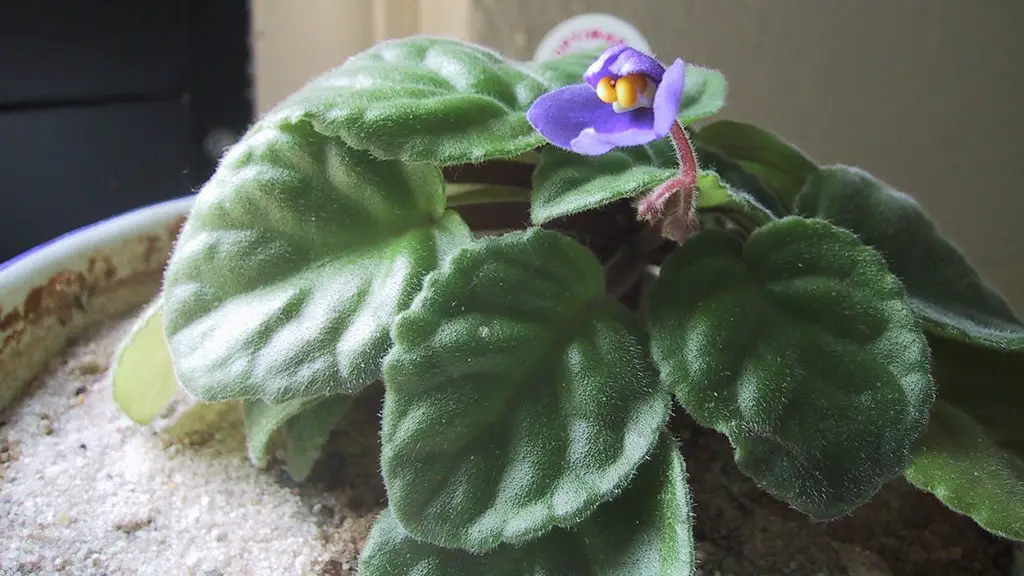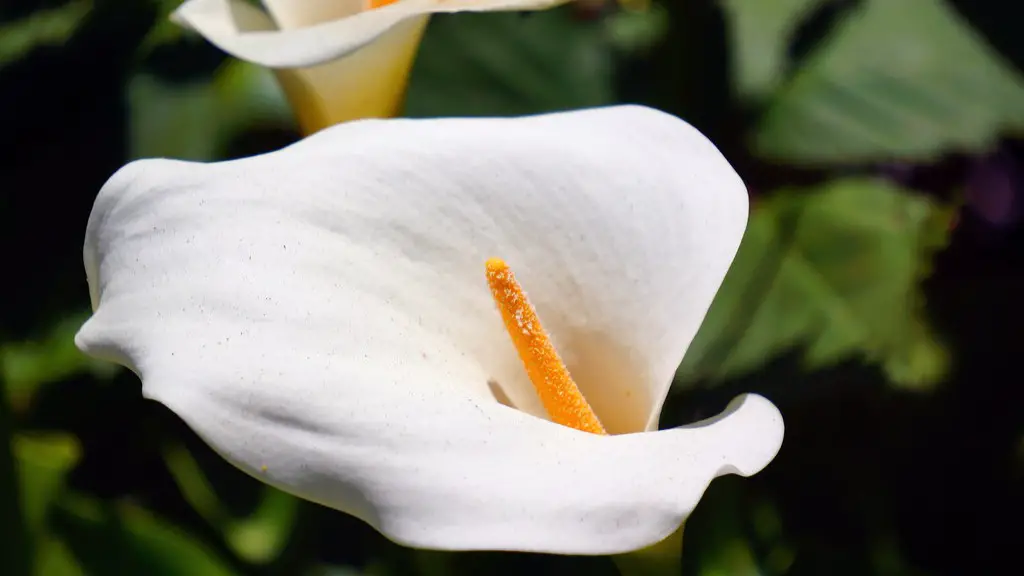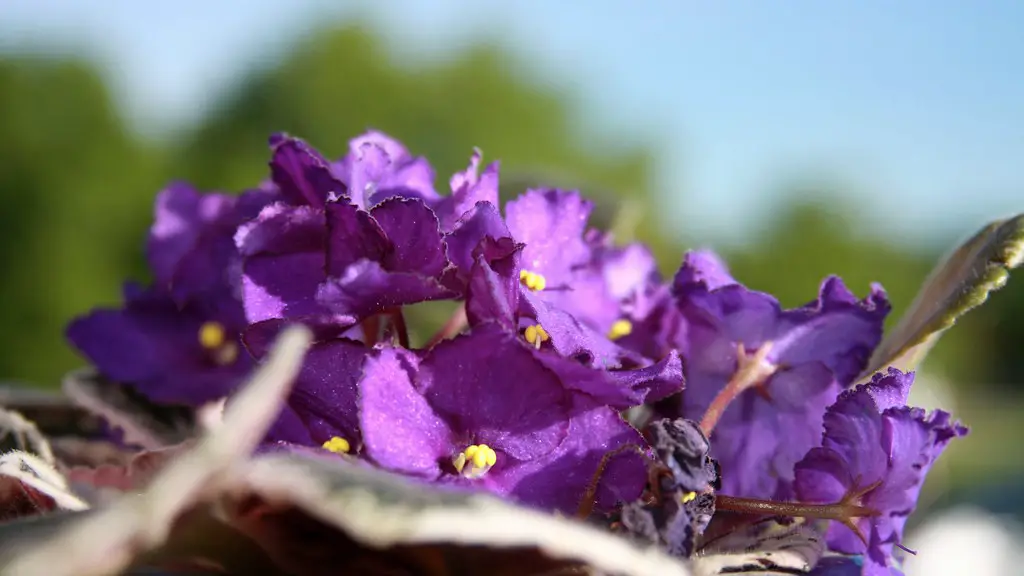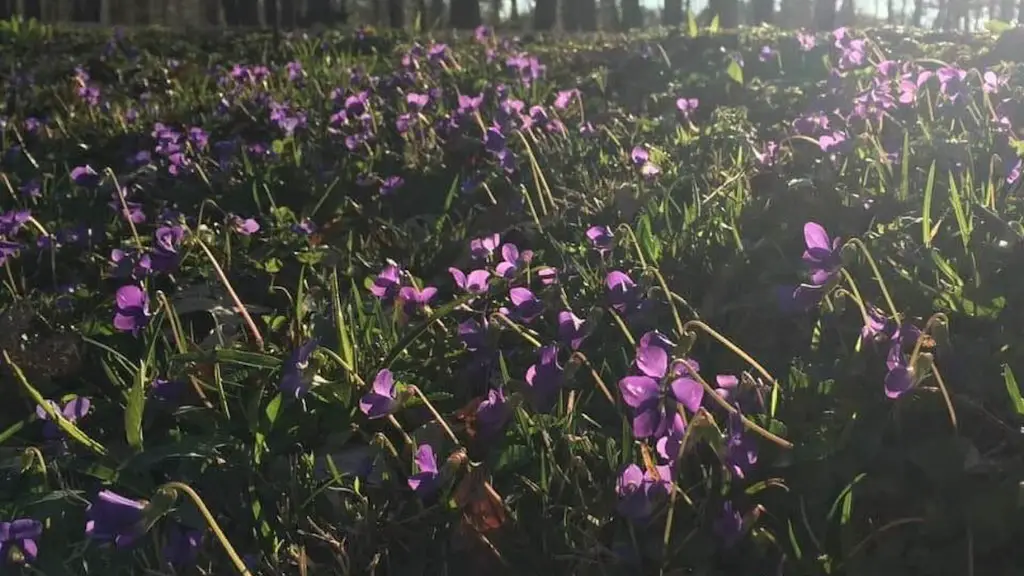If you’re hoping to see some colorful blooms on your African violets, there are a few things you can do to encourage them. First, make sure you’re giving them the right amount of light. They do best with 12-14 hours of bright, indirect light each day. Second, keep the temperature in the room moderate, between 65-75 degrees Fahrenheit. Third, water regularly, but don’t let the soil get too soggy. Allow the top few inches to dry out between watering. Fourth, use a fertilizer specifically designed for African violets. And lastly, be patient! With the right care, you should see blooms within 6-8 weeks.
African violets need a balance of light and darkness in order to bloom. They should be kept in a spot where they will get indirect sunlight for at least six hours a day. The soil should be kept moist, but not soggy. African violets also need to be fertilized regularly in order to bloom.
How do I force my African violet to bloom?
1. Let there be light: African violets need bright, indirect sunlight to bloom. If your plant is not getting enough light, it may stop blooming. Move it to a brighter spot.
2. Turn up the humidity: African violets love humid conditions. You can increase the humidity around your plant by setting it on a pebble tray or using a humidifier.
3. Replenish essential nutrients: African violets need regular fertilization to bloom. Use a balanced fertilizer every two weeks during the growing season.
4. Keep it pleasant: African violets prefer a temperature of 70-75 degrees Fahrenheit. If it gets too hot or too cold, it may stop blooming.
5. Choose the right soil: African violets need a well-drained, clay-based potting mix. Avoid soil that is too dense or too sandy.
6. Protect from pests & disease: Keep an eye out for pests and diseases. If you see any, treat them right away.
7. Constrict the roots: African violets bloom best when their roots are slightly constricted. Use a smaller pot than you think you need.
8.
Epsom salts are a great way to provide plants with essential magnesium and sulfur. These two minerals are needed to produce beautiful blooms and healthy foliage. To use, mix one and a half teaspoons of Epsom salts in a quart of tepid water and swirl to dissolve. Water your African violets (below the leaves) with this solution once a month.
How long does it take for African violets to bloom again
African violets typically bloom every 6 to 8 weeks. With the right growing conditions, a healthy African violet produces flowers—usually several at once—that last several weeks. If you disbud your old flowers (see above), new flowers should bloom within 6 to 8 weeks.
African violets are one of the most popular indoor plants, and for good reason! They are relatively easy to care for, and they make a beautiful addition to any home. African violets grow best in well-drained, slightly acidic soil. Miracle-Gro® Indoor Potting Mix is specially formulated to provide indoor plants like African violets with just the right growing environment.
What is the best African violet fertilizer for blooming?
Many growers have the best success fertilizing once a week with a mild fertilizer designed for African violets. A balanced formula such as a 20-20-20 or one that has slightly more phosphorus, like a 15-20-15 will do well in most growing situations.
African violets need bright, indirect light in order to thrive. A spot near an east- or north-facing window is often a good option. However, do not place African violets in direct sun, as this can scorch the leaves. If a suitable window isn’t available, African violets can be placed under a fluorescent light fixture containing two 40-watt fluorescent tubes.
What causes African violets not to bloom?
If you want your African violet to bloom well, you need to give it bright, indirect sunlight. Too little sunlight will cause the plant to stretch for the light and produce few or no flowers, while too much sun can burn the leaves. An east-facing window is ideal, especially with a sheer curtain to block the sun’s harshest rays.
If your African violet isn’t blooming, it may not be getting enough light. African violets need indirect sunlight, and direct sunlight can burn the leaves. Choose a north- or east- facing window for best results. Keep plants away from cold glass and rotate the pot once a week so all leaves receive light.
Are coffee grounds good for African violets
Coffee grounds are slightly acidic and contain nitrogen, which helps plants grow healthy foliage. Occasionally sprinkling used coffee grounds on top of your African violet potting soil can be good for the plant.
It is fine to water African violets from the top or bottom. However, it is important to use lukewarm or warm water, as using cold water can damage the plant. If you water from the top, be careful not to get water on the leaves when the plant is in the sun, as this can cause leaf spots.
Is baking soda good for African violets?
If you have powdery mildew on your African violets and it’s not improving, you can try spraying the plants lightly with a mixture of 1 teaspoon (5 ml) of baking soda in 1 quart (1 L) of water. You can also spray the air around the plant with Lysol or another household disinfectant but be careful not to get too much spray on the leaves.
If you only water your African violets once a week, it’s important to allow the plant to completely dry out between waterings. One way to make sure your violets are never over-watered is to set up a wicking system. This system uses a long strip of cotton or other absorbent material to wick water up from a reservoir to the plant’s roots.
What month do African violets bloom
To get your African violets to bloom nearly year-round, you need to provide the correct conditions. African violets need a lot of light, but they can’t tolerate direct sunlight. They also need to be kept moist, but not too wet. Allow the soil to dry out a bit between waterings. Provide a humid environment by either setting the pot on a tray of pebbles and water or by placing a humidifier near the plants. Expect your African violets to bloom 10-12 months each year. Each bloom lasts for about 2-3 weeks.
If you love the look of wild violets in your garden, then you’re in luck, because they’re quite easy to care for. However, if you find them to be a nuisance, then you may have a bit more of a challenge on your hands.Wild violets are notoriously difficult to get rid of once they’ve taken root, so it’s important to be proactive if you don’t want them in your garden. The best way to control wild violets is to hand-pull them as soon as you see them. This will be most effective if you do it before they have a chance to flower and spread their seeds.
How many years do African violets live?
This note is to remind you to repot your African violets every few years. African violets are long-lived plants and can last up to 50 years with proper care. Repotting helps refresh the soil and provides the plant with new nutrients. It is also important to monitor the size of the pot to make sure it is not too small for the plant.
African violets need at least 10 hours of bright, filtered light every day to do well. They will scorch if you give them direct sun, so it’s best to avoid that. Keep the soil moist but well drained. You want it to be moist, but not soggy.
Final Words
There are several things you can do to encourage African violets to bloom:
1. Give them enough light. African violets need about 12 hours of light per day to bloom. Place them near a south-facing window for best results.
2. Keep them warm. African violets prefer temperatures of 70-80 degrees Fahrenheit.
3. Don’t let them dry out. African violets need to be kept evenly moist, but not soggy. Water them from the bottom, using a tray or saucer.
4. Feed them. Use a fertilizer specially formulated for African violets. Apply it according to the package directions.
5. Deadhead the blooms. When the flowers start to fade, remove them to encourage the plant to produce more.
African violets are a type of flower that typically blooms in the springtime. However, there are ways to encourage them to bloom at other times of the year. One way to do this is to provide them with the appropriate amount of light. African violets need either full sun or partial sun in order to bloom. Another way to encourage blooming is to fertilize the plant on a regular basis. African violets should be fertilized every two weeks during the spring and summer months, and every month during the fall and winter months.





